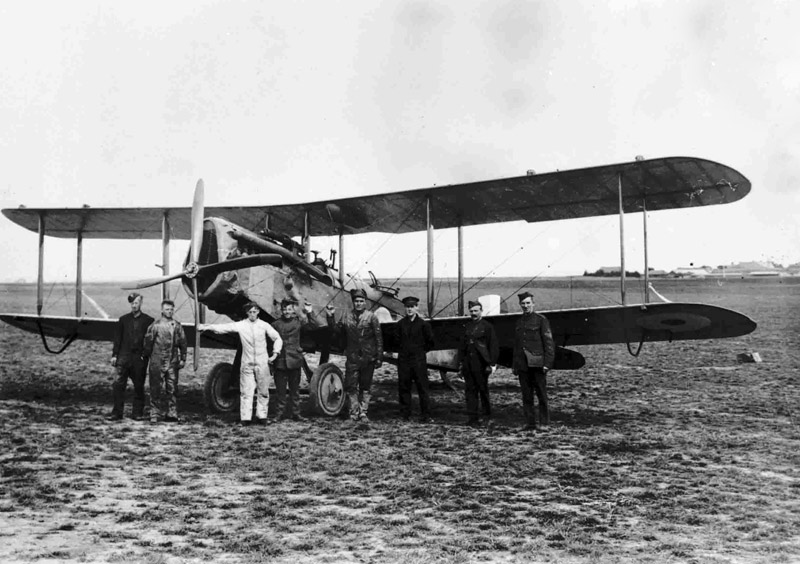First World War
By 1918 cadets progressed through several phases to qualify for their Pilot’s Wings. 
At the Cadet Wing pupils received basic military training during a two-month course which included drill, physical training, military law, map reading and signalling using Morse code.
Once completed they moved on to the School of Military Aeronautics to begin a two-month course of military training and ground instruction. The topics covered included aviation theory, navigation, map reading, wireless signalling using Morse code, photography and artillery and infantry co-operation. The students were also taught the working of aero engines and instruments and basic rigging.
The next phase involved flying at a Training Depot Stations (TDS). Cadets were expected to complete a minimum of 25 hours elementary flying training – both dual and solo – on Avro 504 aircraft logged over three months. Thorough ground instruction was also provided. This achieved, student pilots received the grade ‘A’. 
Cadets remained at the same TDS for the second phase of their instruction. This two-month course included a further 35 hours flying time with a minimum of five hours on a modern ‘front-line’ type of aircraft. Student pilots also had to demonstrate proficiency in cross-country and formation flying, reconnaissance work and gunnery. Successful cadets were graded ‘B’ and commissioned.
Students completed their training at specialist schools which taught them the skills they would need to survive in combat. The courses varied in length and content according to the operational role selected (e.g. fighter, army co-operation, bomber or maritime). On completion, student pilots were graded ‘C’ and permitted to wear their Pilot’s Wings. 
In all, by 1918, it took about eleven months for an individual to qualify as a Pilot.
RAF training pathway showing a trainee’s progress
